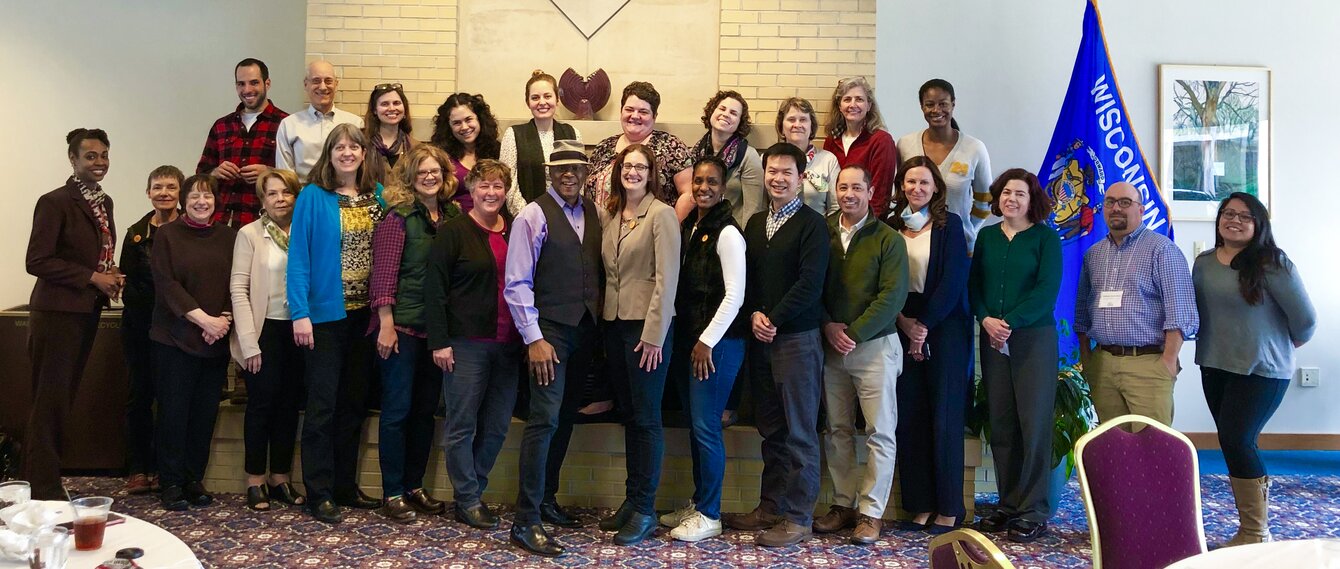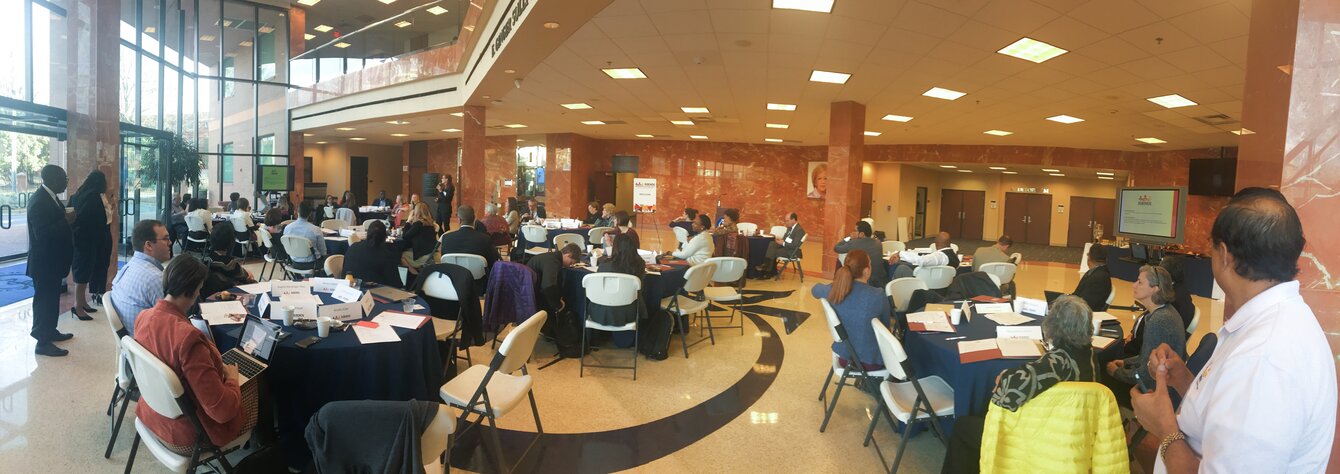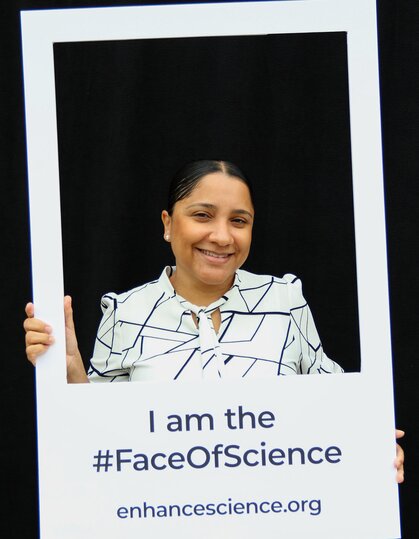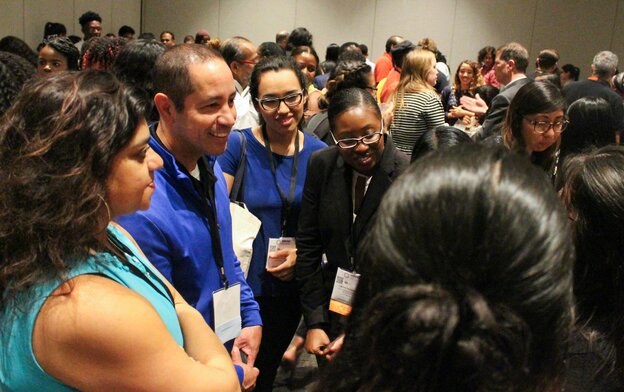Institutionalizing change: Advancing diverse representation in STEMM with the NRMN
By Alexis Short
Over the last 10 years, the National Research Mentoring Network (NRMN) has stood as a pillar of progress in the effort towards diversity and inclusion in science, technology, engineering, mathematics and medicine (STEMM).
Funded by the National Institutes of Health (NIH) and part of the trans-NIH-funded initiative called the Diversity Program Consortium, the NRMN has made concerted efforts to institutionalize change and foster sustainability, ushering in transformative initiatives at campuses across the nation. From the inception and integration of culturally responsive mentorship practices, NRMN has demonstrated a steadfast commitment to fostering a more inclusive academic landscape.
National Research Mentoring Network’s two phases

NRMN Master Facilitators Training in 2016 at the University of Wisconsin-Madison
During NRMN Phase 1 (2014-2019), the NRMN worked across five regional hubs with five institutions hosting a core activity to develop and implement nationwide mentoring programs that broadened access to mentorship for underrepresented groups in STEMM.
In Phase 2 (2019-2024), NRMN continued the work organized into a consortium of independent projects supported by a Coordination Center and Resource Center. The NRMN Resource Center (NRMN-RC), previously the mentorship and networking core in NRMN Phase I, expanded these efforts by creating targeted training and resources for mentors and mentees, enhancing the quality and impact of mentoring relationships across the academic and research communities.
Integration of NRMN into institutional programs
The integration of NRMN principles into existing institutional programs marks a significant stride towards embedding mentorship culture within academic settings. From mentorship ceremonies to summer research programs, institutions have embraced the ethos of NRMN to cultivate a supportive environment for students and faculty alike.
The impact of these efforts extends beyond individual programs, as exemplified by the collaboration between the University of Texas at Houston Medical Center and the MyNRMN online network. By generating online asynchronous courses and training modules, the NRMN platform has made strides in moving the collaboration of STEMM innovators together.1 The NRMN website reaches on average, over 11,000 users each month, serving the community by providing resources, opportunities, training, as well as community updates.2

NRMN Key Personnel Meeting in 2016 at the Morehouse School of Medicine
Jamboor Vishwanatha, PhD, principal investigator for the NRMN-RC, highlighted how important institutional support is for the NRMN.
"The institution's support for programs like the NRMN has been pivotal in driving these initiatives forward," Vishwanatha said.
Central to the mission of the NRMN is the transformation of STEMM education through institutionalized change. As the catalyst for these changes, NRMN has driven the integration of new courses into academic curricula, such as the NRMN Unconscious Bias course with over 5,600 course learners who have been trained and received a certificate.3 Developments such as this demonstrate a commitment to diversifying course offerings and supporting students from underrepresented backgrounds.
Leveraging NRMN resources and shifting culture in the mentorship environment
Beyond tangible achievements, the NRMN has spearheaded efforts to shift culture within academic institutions, fostering mentorship environments characterized by intentional support and resources.
Damaris Javier, co-investigator for the NRMN, shared a unique perspective on the evolution of the network over the past almost 10 years.
“A positive result of the NRMN-Resource Center during Phase I has been how nationwide partners, [such as] academic institutions, professional and scientific societies, NIH institutes, and other organizations, are leveraging NRMN-RC resources,” Javier said. “I have been fortunate with the opportunity to engage with nationwide partners during these past 9 years.”
Javier said she has noticed a shift in the conversations with NRMN partners.
“In the past, partners were looking for resources for individuals such as students and faculty,” Javier said. “However, the conversations have shifted on how NRMN-RC can support their mentoring practices and initiative to approach mentorship more intentionally and structured at their [institutional, programmatic and organizational] levels. I think this is a beautiful shift because embracing mentoring more structurally from a program, department, and organization level, is critical for broadening participation.4
[It reflects] a deeper understanding of the importance of mentorship in nurturing talent."

Damaris Javier, co-investigator for NRMN
Towards sustainable impact: Looking ahead
Looking ahead, the NRMN remains steadfast in its commitment to advancing diversity in STEMM. By highlighting the hallmarks of the network and continuing to provide resources to under-resourced institutions, NRMN aims to perpetuate a culture of mentorship and inclusivity.
According to NRMN-RC leadership, although the path to sustainability is not without its challenges, including the recent legislative changes in Texas, NRMN is dedicated to overcoming these obstacles through innovative strategies and robust support systems.
With additional funding and support, NRMN-RC plans to expand its initiatives, enhancing mentorship programs and extending resources to reach more groups in STEMM fields.
"The future of our programs hinges on sustained funding and ongoing support from stakeholders," Vishwanatha said.

Harlan Jones, PhD, hosting the NRMN Meet and Greet for ABRCMS 2017
Harlan Jones, PhD, who is a NRMN Master Facilitator Trainer and previous co-investigator of the NRMN mentor and networking core during Phase I, talked about the foundation that the network has set for enhanced mentorship in STEMM.
“The NRMN stands as a testament to the power of collective action in driving meaningful change in STEMM education,” Harlan said. “By institutionalizing initiatives, fostering sustainability, and prioritizing mentorship, NRMN has laid the groundwork for a more diverse, equitable, and inclusive academic landscape. The ongoing efforts and unwavering dedication of NRMN aims to ensure that mentorship and support for the community will continue to flourish, creating a lasting impact in STEMM.”
Through collaborative endeavors and a shared vision for the future, the NRMN-RC aims to continue to build networks, engage mentors and mentees and institutionalize the culture of mentorship for generations to come.
References
1 Ahmed, Toufeeq, et al. “MyNRMN: A National Mentoring and Networking Platform to Enhance Connectivity and Diversity in the Biomedical Sciences.” FASEB- Federation of American Societies for Experimental Biology, 24 Feb. 2021, faseb.onlinelibrary.wiley.com/doi/10.1096/fba.2020-00102.
2 Javier D;Stinson K;Zavala M;Ahmed T;Vishwanatha JK; “NRMNet: Building a National Resource for Mentorship, Networking and Professional Development to Enhance Diversity.” Ethnicity & Disease, U.S. National Library of Medicine, 15 July 2021, pubmed.ncbi.nlm.nih.gov/34295135/.
3 Ahmed, Toufeeq, et al. “MyNRMN: A National Mentoring and Networking Platform to Enhance Connectivity and Diversity in the Biomedical Sciences.” FASEB- Federation of American Societies for Experimental Biology, 24 Feb. 2021, faseb.onlinelibrary.wiley.com/doi/10.1096/fba.2020-00102.
4 Thompson, E. L.; Syed, T. A.; Latif, Z.; Stinson, K.; Javier, D.; Saleh, G.; and Vishwanatha, J. K. “Examining Educational and Career Transition Points Among a Diverse, Virtual Mentoring Network.” Journal for STEM Education Research, April 2024. https://doi.org/10.1007/s41979-024-00119-y
The Diversity Program Consortium Coordination and Evaluation Center at UCLA is supported by Office of the Director of the National Institutes of Health / National Institutes of General Medical Sciences under award number U54GM119024.

Grow Together.
